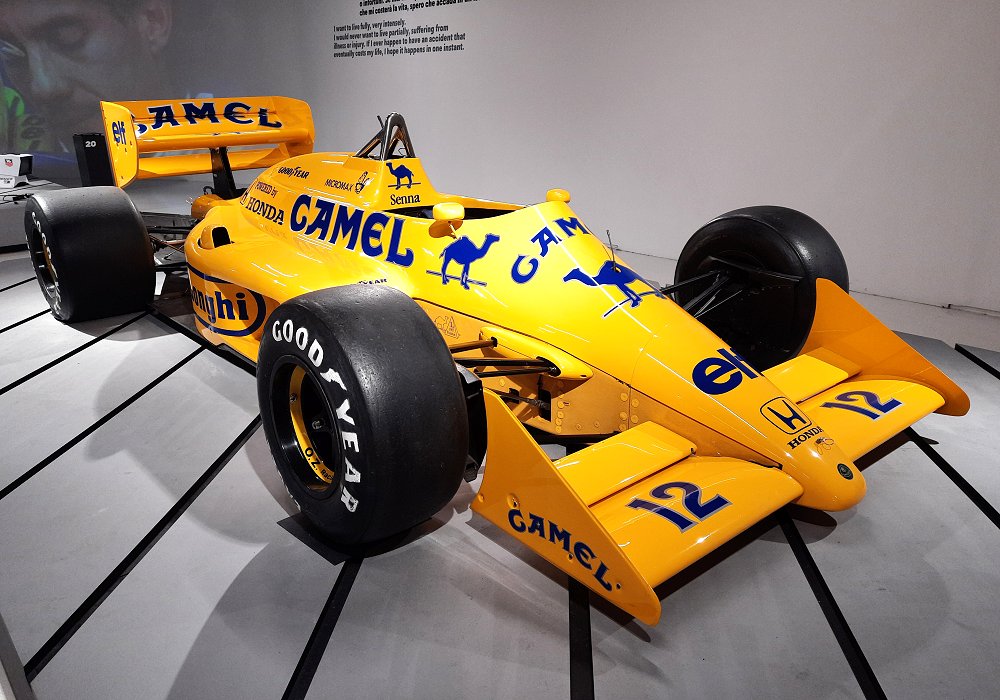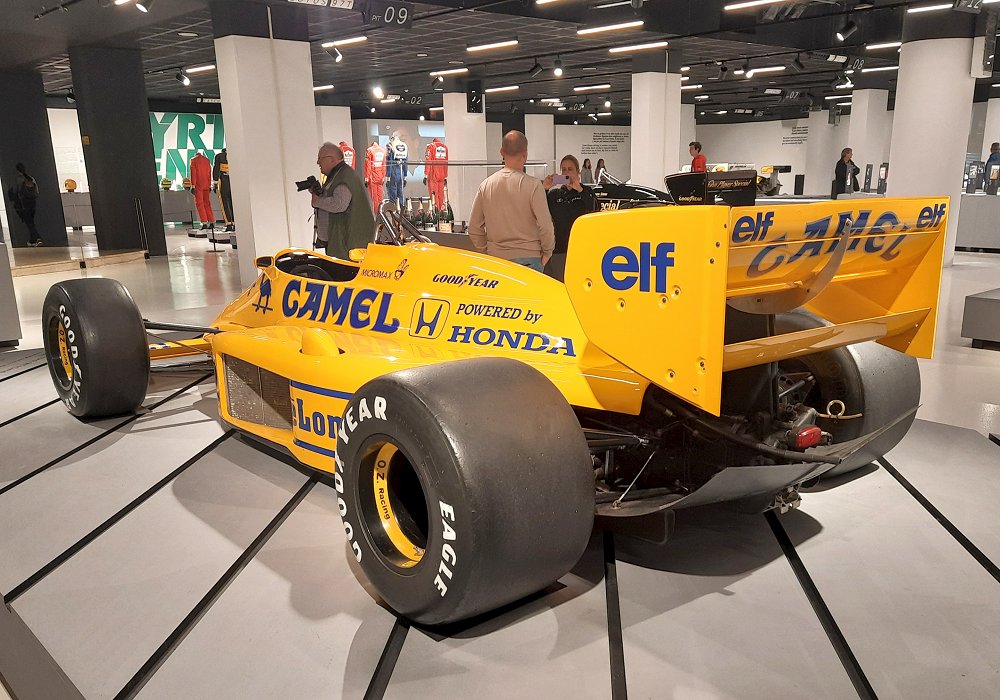Description
The Lotus 99T/4 was one of the most distinctive and technically ambitious Formula One cars of the late 1980s. Raced during the 1987 season, it combined Honda’s powerful V6 turbo engine with Lotus’s pioneering use of computer-controlled active suspension. The 99T marked the final F1 campaign of Ayrton Senna with Team Lotus and delivered the team’s last Grand Prix victories. Chassis 99T/4 was one of the primary cars used by Senna throughout the season and became closely associated with some of his most famous drives.
The 99T was designed by Gérard Ducarouge with significant input from the suspension engineering group led by Nigel Stepney and Frank Dernie. It used a conventional aluminium-honeycomb monocoque, but its defining feature was the fully active hydraulic suspension system. The car dispensed with anti-roll bars and traditional spring rates; instead, sensors and hydraulic actuators kept the chassis riding at a constant height and attitude. This system attempted to stabilise the aerodynamic platform and reduce pitch and roll, something particularly useful with the era’s low-slung underbody tunnels and stiff turbo-era requirements. Although heavy and complex, active suspension allowed the 99T to run softer mechanical settings without losing ground-effect efficiency.
Power came from the Honda RA166E 1.5-litre V6 turbo engine, one of the most refined and reliable turbo units of its time. In race trim it produced around 750 horsepower, while qualifying boost could push figures toward 900 horsepower when conditions permitted. The engine was paired with a six-speed Hewland gearbox and delivered flexible, progressive power delivery that worked well with the 99T’s controlled chassis responses. The combination of Honda power and Lotus’s active ride philosophy produced a car that behaved very differently from its competitors; instead of dancing on a knife-edge, the 99T often floated softly but predictably over bumps, maintaining stability where stiffer rivals struggled.
Handling characteristics were directly shaped by the active system. The car lacked the sharp, reactive feel of earlier Ducarouge Lotus designs, but it excelled on street circuits where rough surfaces and constant elevation changes rewarded consistent platform control. Senna adapted quickly, using the car’s ability to remain stable while others bounced and skittered across uneven tarmac. On smoother permanent circuits the 99T was competitive rather than dominant, but its balance and predictability allowed both Senna and Satoru Nakajima to qualify strongly and finish consistently in the points.
The highlight of the season came with Ayrton Senna’s victories at Monaco and Detroit, both achieved with chassis 99T/4. At Monaco the active suspension delivered exceptional ride quality over the bumps, allowing Senna to push hard while maintaining confidence through the car’s stable attitude. At Detroit the system offered even more advantage, and Senna controlled the race with precision, taking Lotus’s final Formula One victory. The car also secured several podium finishes, helping Lotus achieve third in the Constructors’ Championship and proving that the team could still produce innovative, front-running machinery in the turbo era.
Visually, the 99T was unforgettable. Its bright yellow Camel livery replaced the long-running JPS black-and-gold scheme, giving Lotus a bold new identity. The car’s compact, rounded bodywork, clean sidepods, and distinctive raised airbox made it an instantly recognisable shape in the 1987 field. It was one of the first major F1 designs to blend powerful turbo aesthetics with the emerging aerodynamic efficiency trends that would shape the 1990s.
Today, the Lotus 99T/4 is remembered as a landmark machine: the last Lotus to win a Grand Prix, the final car Senna drove for the team, and one of the earliest and most influential experiments with active suspension in Formula One. It demonstrated the potential of computer-controlled vehicle dynamics long before the technology reached full maturity, and it stands as a symbol of Lotus’s enduring spirit of innovation during a period of immense technical change.


